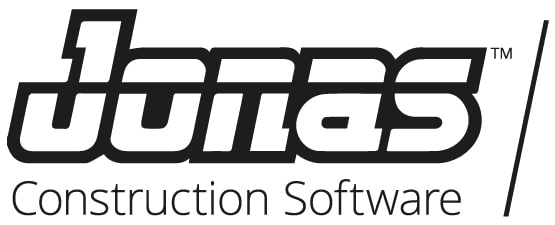Joist is a billing and invoicing software solution designed for contractors in various industries such as fencing, flooring, drywall, carpentry, and more. Key features of Joist include:
- Creating and sharing professional estimates and invoices quickly
- Accepting online payments and offering homeowner financing options to clients
- Organizing customer information and job details in one place
- Syncing with QuickBooks Online to automate bookkeeping
- Unlocking additional professional features like custom logos, photos, contracts, and notifications with the Joist Pro subscription
The basic version of Joist allows users to create up to 5 estimates and invoices per month, while the Joist Pro subscription provides unlimited documents and access to the full suite of professional features. Overall, Joist aims to help contractors streamline their billing, invoicing, and payment collection processes to win more jobs and increase profitability.
The Joist app provides contractors with a streamlined, all-in-one platform for managing essential business operations such as estimating, invoicing, and payment collection.
By allowing users to create detailed estimates and invoices directly from their mobile devices or computers, Joist simplifies the process of managing client interactions and financial documentation.
To use the Joist app effectively, follow these steps:
1. Sign Up and Set Up Your Account
Go to the Joist website and sign up for a free account.
Download the app from the App Store or Google Play.
Set up your company information, including your logo, name, address, and tax details.
2. Create Estimates
Use the app to create detailed, professional estimates for your clients.
Include items, descriptions, and prices to ensure accurate quotes.
Send estimates to clients via email or share them directly from the app.
3. Manage Clients and Projects
Store all client information securely in the app.
Track project progress and manage tasks using the app’s project management features.
4. Accept Payments
Offer clients various payment options, including credit cards, debit cards, and online payments.
Accept payments directly through the app and get paid faster.
5. Invoicing and Bookkeeping
Create professional invoices with your logo and send them to clients.
Automate bookkeeping by syncing your jobs and clients with QuickBooks Online.
6. Customize and Manage Notifications
Set up custom messages that will be automatically typed when sending emails.
Receive notifications when clients open or view your estimates or pay your invoices.
7. Use the App on Both Desktop and Mobile
Use the desktop version for easier typing and the mobile app for convenience and portability.
Both versions link to each other, so you can access your data from anywhere.
8. Upgrade to Joist Pro for Additional Features
Unlock additional features like custom logos, photos, and attachments for estimates and invoices.
Offer financing options to clients and track payments more effectively.
By following these steps, you can effectively use the Joist app to streamline your billing, invoicing, and payment collection processes, saving time and increasing profitability for your contracting business
Based on the search results, the Joist app offers the following pricing options:
Joist Basics (free plan): Up to 5 documents per month, unlimited clients, display your logo, add line items and document photos.
Joist Pro: $14/month or $140/year. Includes unlimited documents, online payments, homeowner financing, project templates, QuickBooks sync, and more advanced features.
Joist Elite: $32/month or $320/year. Includes all Pro features plus deposit and payment schedules, custom contracts, client activity tracking, change orders, and priority support.
The app is free to download and the basic Joist Basics plan is free to use. However, the Pro and Elite plans require a paid subscription to unlock the full set of professional features.
Joist also offers optional add-ons like QuickBooks sync for an additional monthly fee. Overall, Joist provides a free plan as well as paid subscription tiers to meet the needs of different sized contracting businesses.
To transfer your Joist app with data to your new phone, follow these steps:
1. Prepare Your New Phone
Ensure your new phone is fully charged.
Set up your new phone and connect it to Wi-Fi.
2. Transfer Data
On your old phone, open the Joist app.
Tap the three horizontal lines on the top left corner to access the menu.
Select “Settings” and then “Export Data.”
Choose the data you want to export, such as estimates, invoices, and clients.
Tap “Export” to generate a CSV file.
3. Import Data on New Phone
On your new phone, open the Joist app.
Tap the three horizontal lines on the top left corner to access the menu.
Select “Settings” and then “Import Data.”
Choose the CSV file you exported from your old phone.
Tap “Import” to transfer the data to your new phone.
4. Verify Data Transfer
Check your new phone to ensure all data has been successfully transferred.
Verify that all estimates, invoices, and client information are present and accurate.
5. Update Your Joist Account
Log in to your Joist account on your new phone.
Ensure your account is updated with the new phone’s information.
6. Update Your QuickBooks Integration (Optional)
If you use QuickBooks, ensure you have the latest version and that your Joist account is synced with QuickBooks.
By following these steps, you can transfer your Joist app with data to your new phone, ensuring continuity and minimizing disruption to your workflow.
You can cancel Joist by ending your Joist Pro subscription through the Joist website, Google Play, or the Apple App Store, depending on how you signed up.
- Joist Basics (free): No cancellation needed; just stop using the app. Export data first if needed.
- Joist Pro (website): Log in, go to Subscription Settings, and select Cancel Plan.
- Google Play: Open account settings → Subscriptions → Joist → Cancel Subscription.
- Apple App Store: Go to Apple ID Settings → Subscriptions → Joist → Cancel.






































